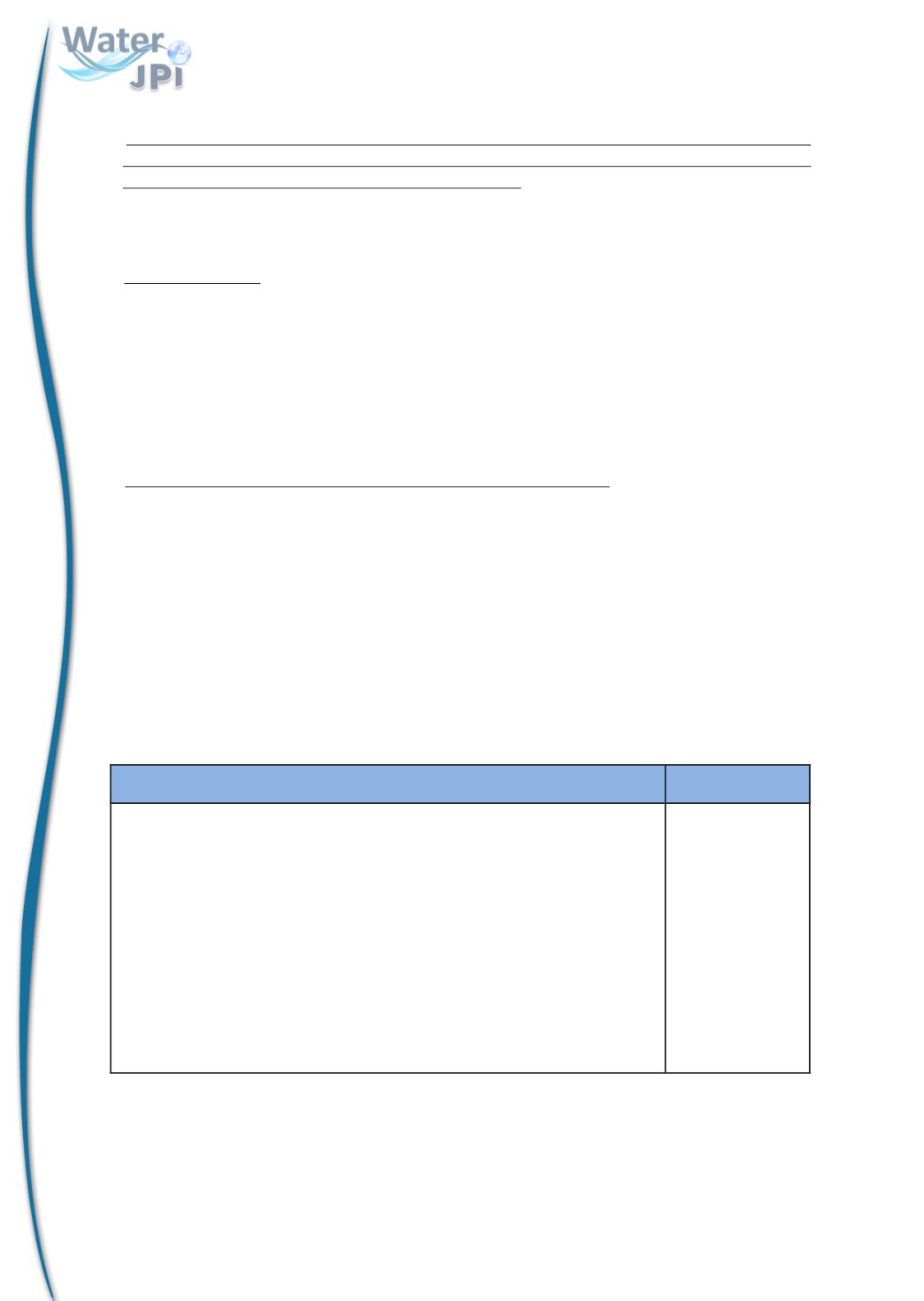
• Technological developments in water reuse face a number of constraints: financial, human
health, environmental safety standards and regulations, monitoring and evaluation, energy
consumption, and public acceptance and awareness. Case studies from different European
areas and involving different types of reused water producers and receivers are needed to
complete the understanding of the processes involved. Solutions identified in these case stud-
ies should be tested for transferability to other sectors and areas of Europe and the world.
• Water desalination. In areas with high water demand for residential use, tourism or agriculture,
desalination can contribute to the solution of water scarcity. Desalination is challenged by in-
stallation and energy costs, and by environmental issues such as brine management. Local
water stakeholders often experience both the problem-solving capacity of this technology
and the relevance of the related challenges. The thermodynamic energy requirement to sep-
arate water and salt implies that – despite technological progress – desalination will always
be an energy‑intensive technology. The Water JPI will address desalination challenges by com-
bining renewable energies with desalination plants and reducing the environmental impact of
brines.
• Valorisation of wastewater sewage/sludge and desalination brine. Shifting from the conven-
tional view of waste to a resource that can be processed for the recovery of energy (con-
verting organic matter into biogas using sludge digestion) and raw materials brings many
opportunities to the water sector. A number of technical, economic and management ap-
proaches are available for recovering nutrients from wastewater streams. One example of
such an approach is the recovery of phosphorus to produce fertilisers. Additionally, the pro-
duction and recovery of chemicals such as cellulose, phosphate, polyhydroxyalkanoate (bio-
plastic) and alginates has become technologically and economically feasible. The recovery of
all these chemicals enables substitution of mining or industrial products. Exploring these op-
tions will increase market opportunities.
Currently Identified Needs
RDI needs and rel ated ob jecti ves
T ime frame
3 .1. 1. Devel opi ng smar t wate r techno l ogi es (sensor net -
works and real-t ime informat ion systems i n water di st ri bu-
t i on and wastewater networks)
Developing innovative, affordable (micro- and nano-) sensors and detec-
tion systems, remote control systems, data networks, intelligent meth-
ods and DSS to manage (monitor and control) water distribution and
wastewater networks. Standardisation and interoperability will support
competitiveness and defend consumers’ interests.
Link with 2.21 and
2.2.2.
Developing algorithms and software tools for modelling and simulating
water acquisition and control systems.
Short
34


